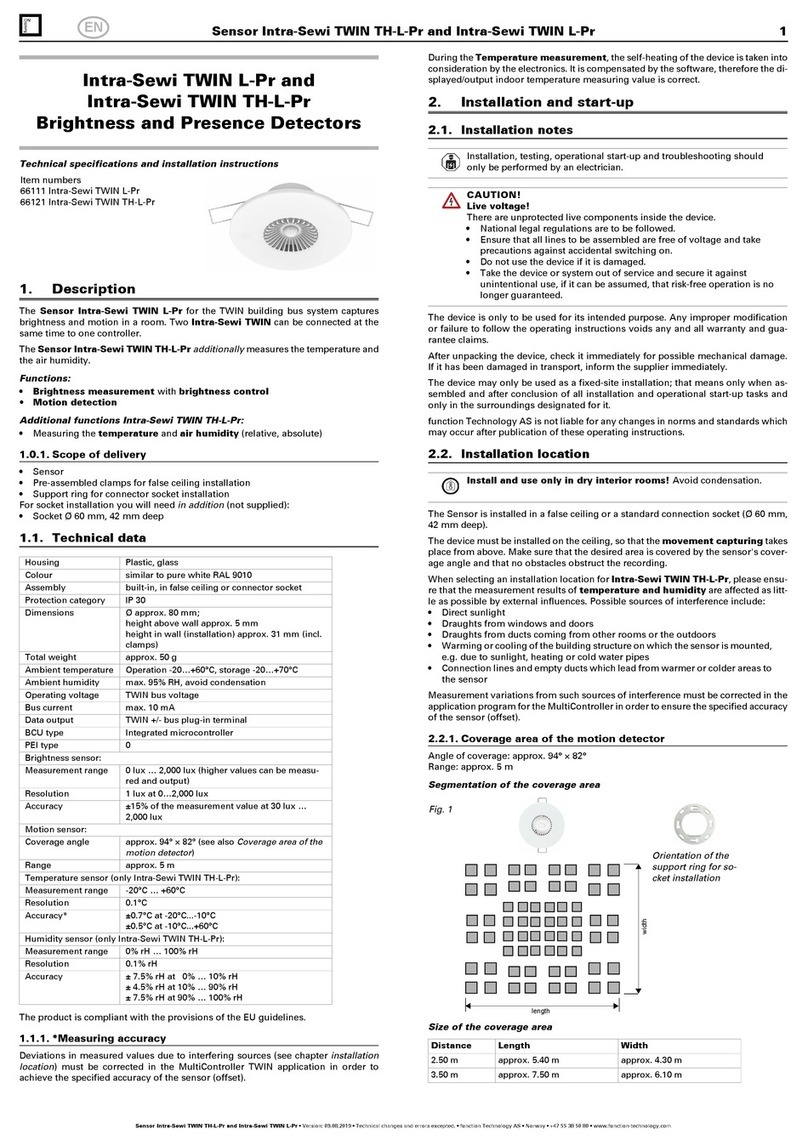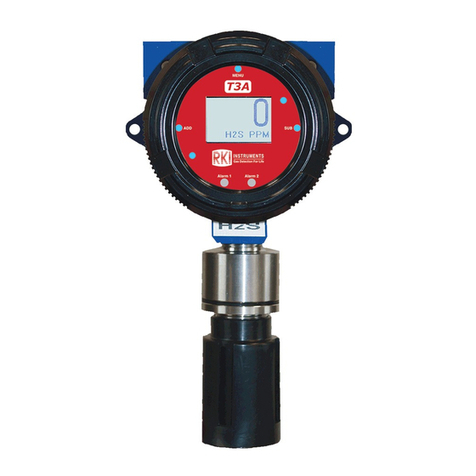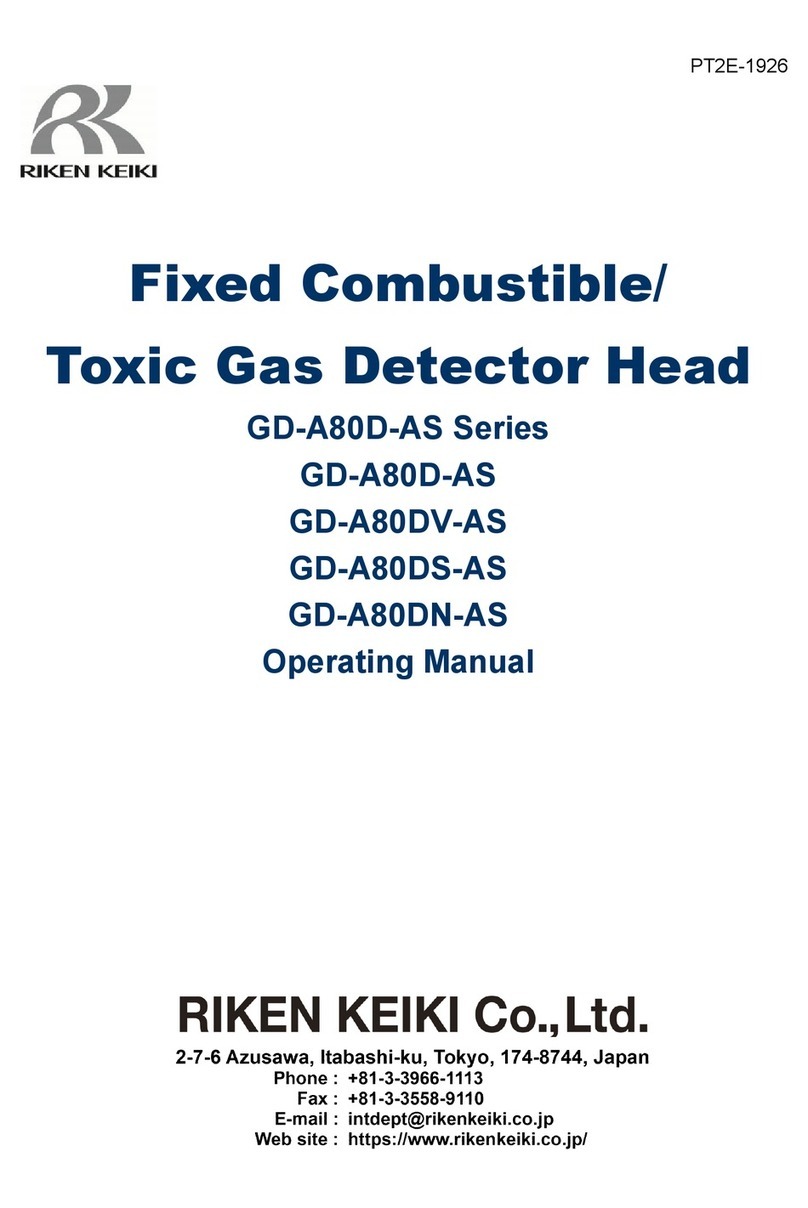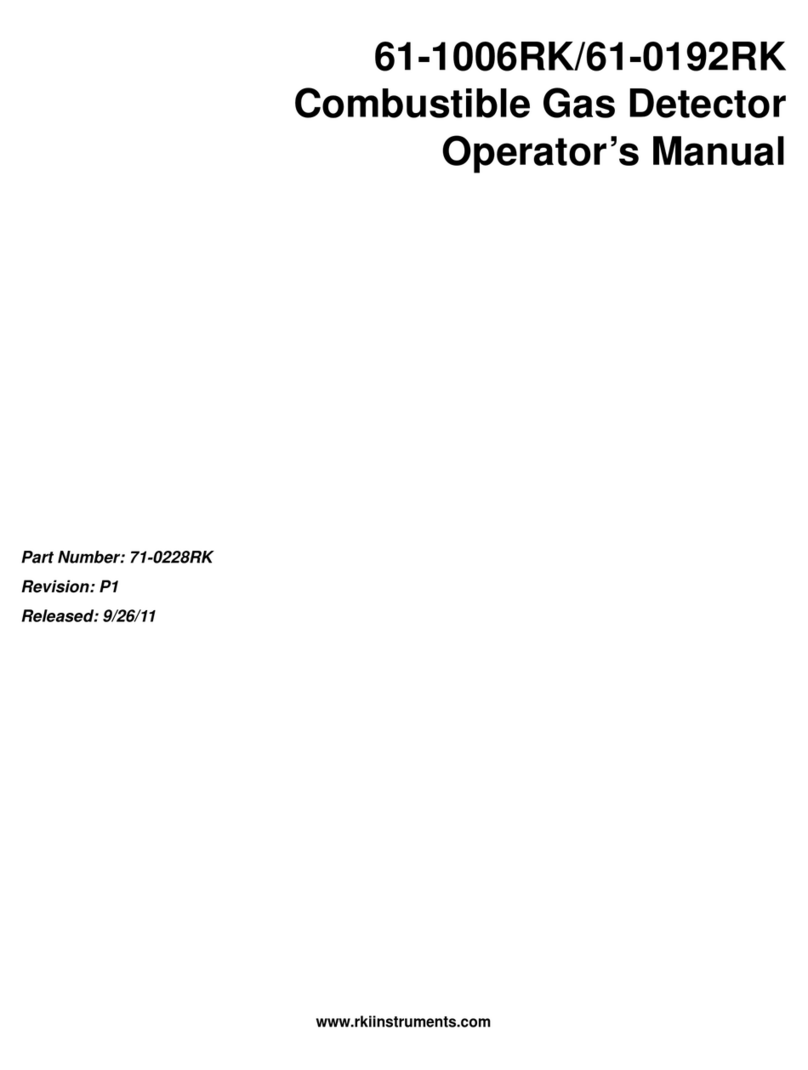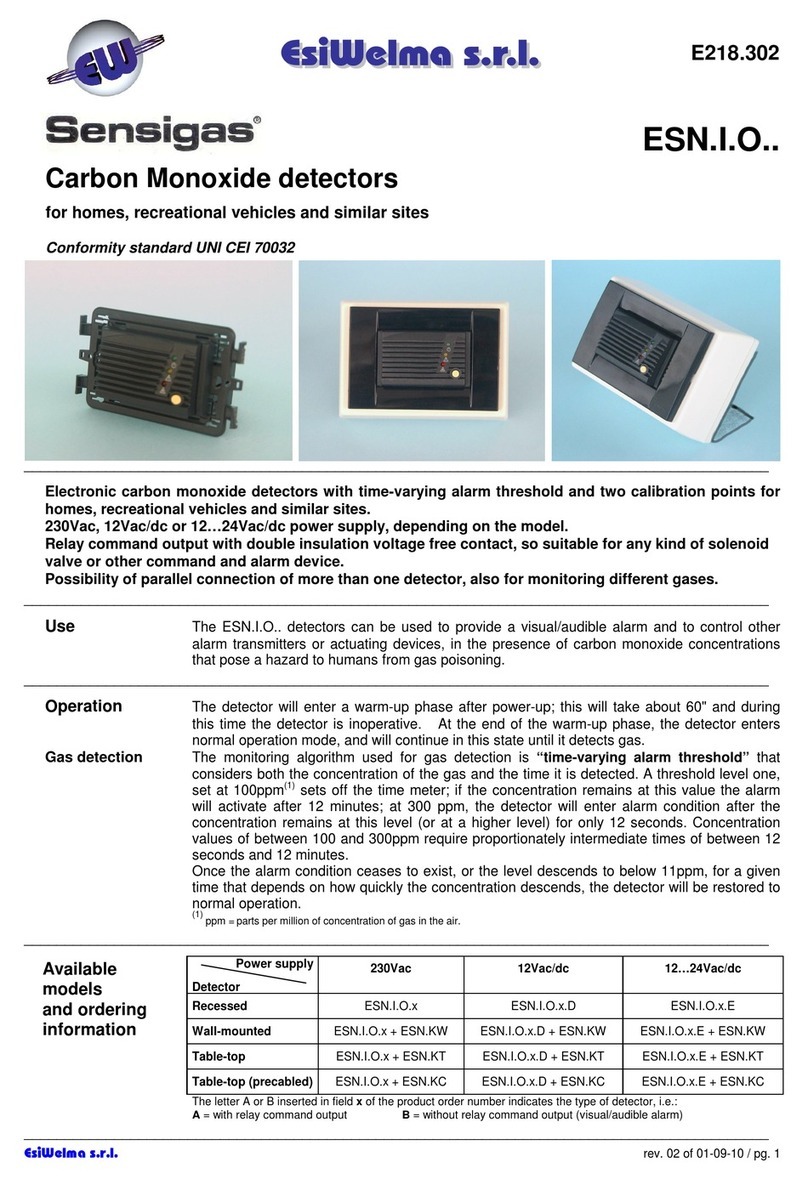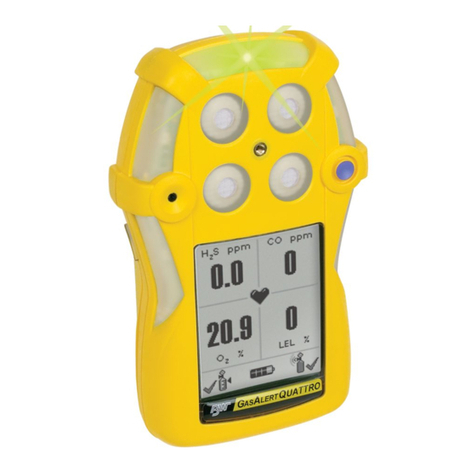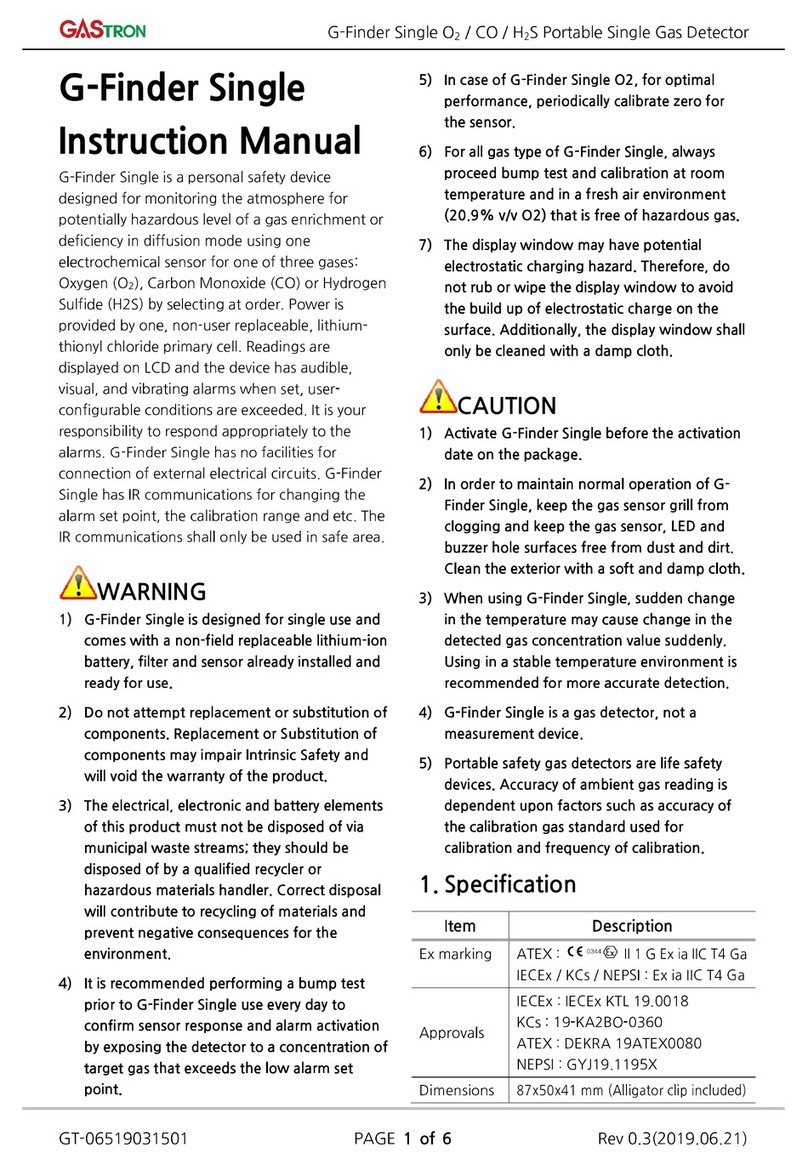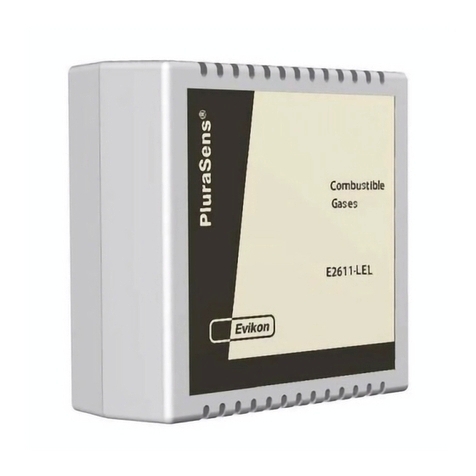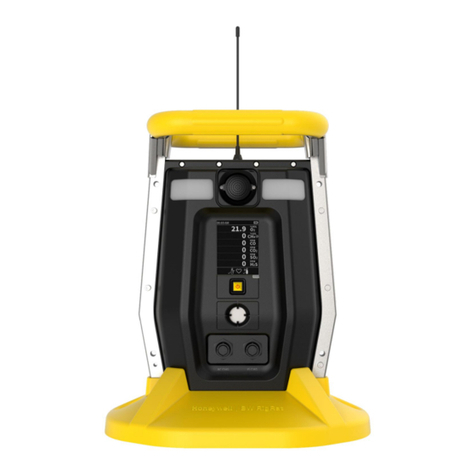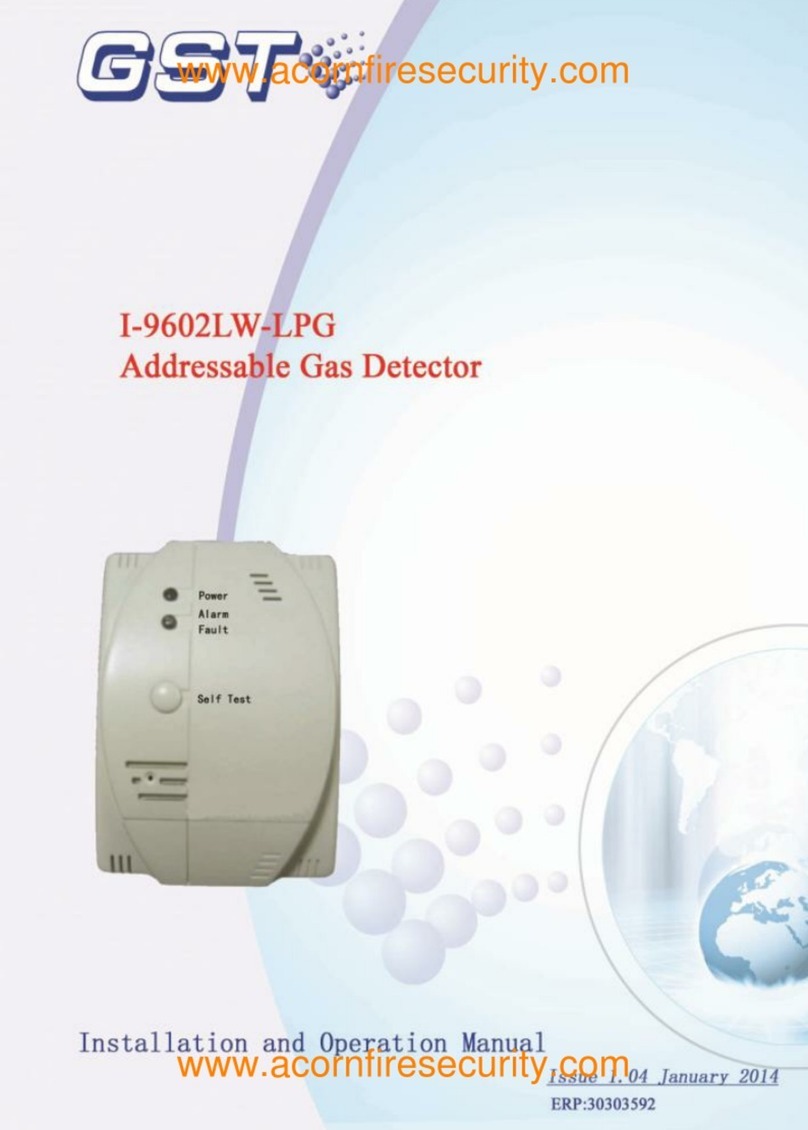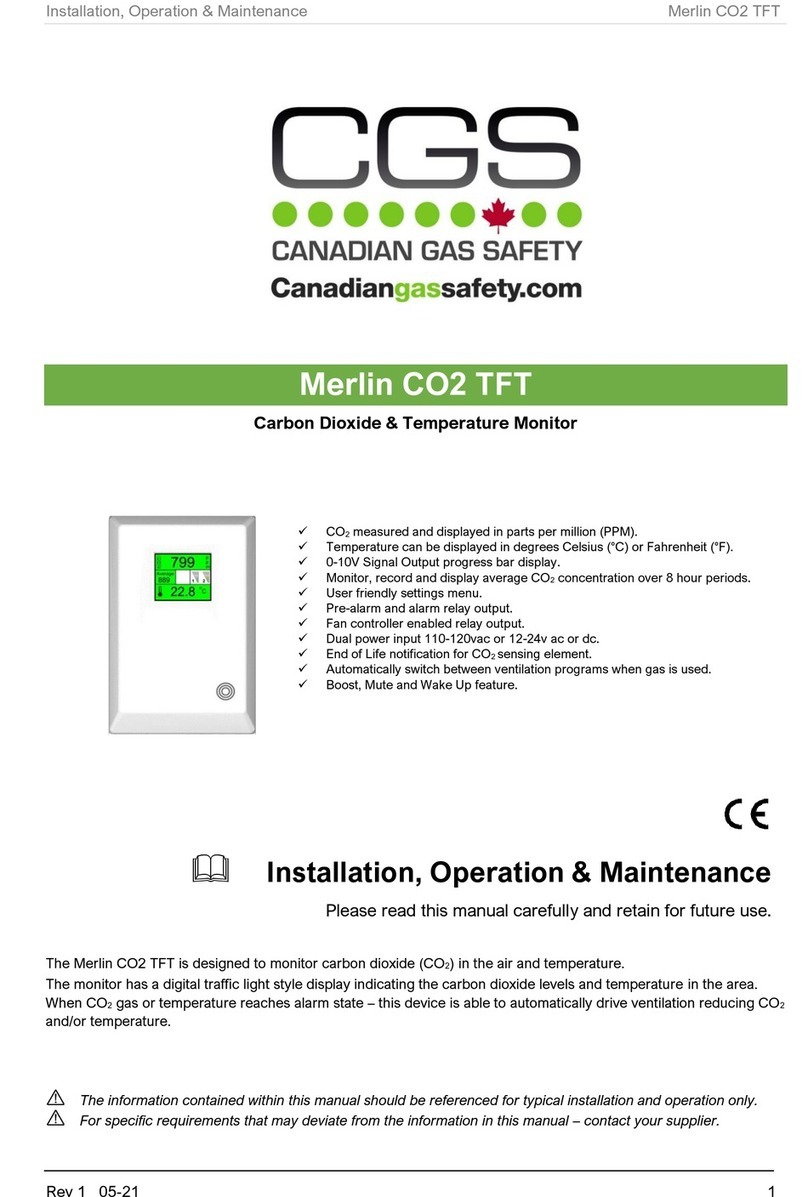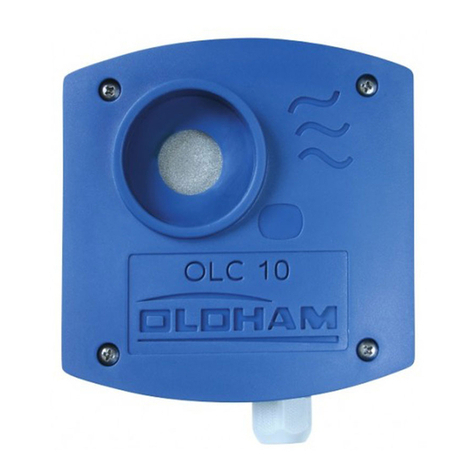
Installation
Once you have determined the mounting position for your detector, drill a 1/2"D hole in your dash or console,
(surface-mount unit) and feed the sensor cable and power line through from behind. If you are installing the
flush-mount unit follow the instructions on the template supplied. Connect the power, (red to positive via an
in-line 2 Amp fuse, and black to negative) and plug the sensor connector into the socket. Connect each
yellow lead to a length of 16 or 18 gauge wire long enough to reach the solenoid valve. Screw the detector
down to your dash or console.
Optional Sensors
An extra remote sensor can be added to allow detection of leaks in a second compartment. Ask your dealer
for details.
Connecting the Solenoid Valve
Install the propane valve on the low pressure side of the regulator with the feed line from the propane tank
connected to the “IN” port. Connect the distribution line to the other port. Connect the two wires running from
the yellow leads on the detector to the leads on the solenoid valve. Your installation is now complete!
Operation
Press this power switch to activate the detector. When the unit is first turned on the horn is muted until
the detector has warmed up.
Red LEDs for sensor 1 & 2 will alternate flashes during warm-up.
Press this propane switch to open the propane valve.
The yellow LED below this symbol will lightl to indicate the propane valve is open.
If you have a leak, and the concentration reaches 15% to 25% of the lower explosive level, the red LED
below this symbol will flash, the alarm will sound and the propane valve will shut off in 32 seconds.
Press this switch if you want to stop the alarm while you correct the problem.
This detector also warns you when your battery is losing its charge. If the voltage drops to 10VDC and the
horn will give a short pulse every 8 seconds. If power drops to 9VDC the propane is shut off and stays off until
you reset it. This protects you from gas in the lines or unlit pilot lights once power is restored.
The detector can be tested by injecting gas (no flame) from a butane lighter for 5 seconds into the sensors. Perform
this test weekly to ensure proper operation of the detector.
Wiring Diagram
Power requirements: GS/7 with 1 sensor: 130mA; optional second sensor adds 85mA; when the solenoid
is energized it adds 130mA.
Warning! The sensor may become contaminated if it comes in contact with water: Keep it dry!
Warranty: 2 years against defects in workmanship or materials, exclusive of sensor.
Information contained in this brochure is subject to change without notice. This brochure is for information purposes only. Printed in Canada
GS/7 Propane Detector
Electro Systems Inc.
#8-415 Dunedin St.
Victoria, BC
Canada V8T 5G8
T: 250.385.0911
toll free:1.800.668.2254
F : 250.385.0733
toll free:1.800.661.4977
E: info@es-web.com
www.es-web.com
Electro Systems has made
boats and recreational
vehicles safer for over 40
years. We have a complete
line of propane detectors for
you to choose from.
To find out more about our
products, ask your local
dealer, or contact us. We’ll be
glad to send you our current
information.
Sensor #2 (optional) Sensor #1
12VDC
battery
-12VDC
(black)
+12VDC (red)
16 or 18 guage wire
solenoid
valve
yellow
2 amp fuse
